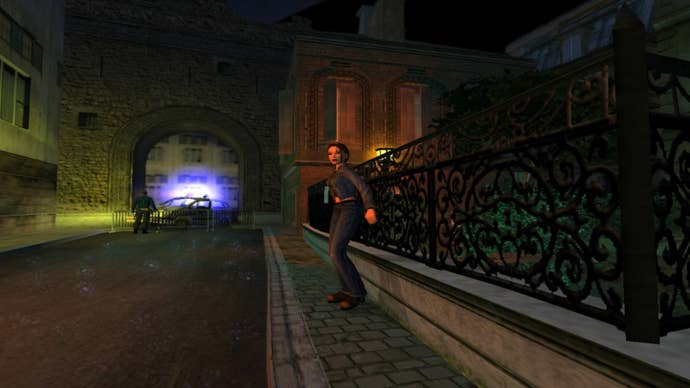Celebrate the best (worst) Tomb Raider game turning 20 this year by grabbing it for under £1
Tomb Raider: The Angel of Darkness — franchise killer or precursor to TR's modern success?
20 years ago this month, on a better timeline, Tomb Raider: The Angel of Darkness was released for PC and PlayStation 2, with the latter marking Lara Croft's next-gen debut.
Avid Tomb Raider fans — including my then 13-year-old self — rushed out, bought it, played it, and loved it. We praised its willingness to break away from the formula established by the first five games in the series by including daring new features like skill levelling, non-hostile areas where you could gather information and stock up from vendor NPCs, a second playable character, and a plot you could actually follow, all without sacrificing any of the shooty-shooty-puzzle-solvey goodness we'd come to expect from the series.
Unfortunately, we dwell on this timeline, where what actually happened is that Tomb Raider developers Core Design were instructed at short notice to pull forward the release date for Tomb Raider: The Angel of Darkness from its planned 2003 Christmas period launch slot to June of that year, cutting off the last four or five months of the anticipated development period. The result was a game that was, in many ways, deserving of the descriptor "unplayable".
The thing is, though, everything I praised about the game in that first paragraph is also true. Like its low-key emo restyling of Lara Croft herself, Tomb Raider: The Angel of Darkness is complicated. It feels like no-one understands what it's been through, you know?
If you're wondering what could possess a publisher to demand a developer move up production by nearly half a year at short notice, we've never heard a definitive answer, but a look at the timeline suggests one strong theory: that poor old AoD was essentially treated as a marketing tie-in to the second Tomb Raider movie, which was due to hit cinemas in August 2003. And, well, we all know that movie tie-in video games have a reputation for being even worse than video game movies, so viewed through that lens, maybe what happened with AoD shouldn't be all that surprising.

It's especially galling in Tomb Raider's case, though, to see a game rushed out to promote the movie that's allegedly riding the wave of that same franchise's popularity in the gaming scene. To this day, you'll see fans of the films arguing that The Angel of Darkness killed the Angelina Jolie film franchise, only to be hotly countered by fans of the Core Design-era games who feel that the push to make the film the centre of attention was the death knell for the games' original continuity and the studio that created it.
Maybe, if given enough time to cook as a game sequel independent of the budding movie franchise it spawned, The Angel of Darkness would have gone down in history as a major turning point for Tomb Raider. But, to be honest, I think it would likely have been half-remembered as a mid-series game that introduced some cool new ideas, but didn't implement them in the optimum fashion. That said, the fact that many of its ideas were picked up in later games — especially the 2013 series reboot — is evidence that The Angel of Darkness was, in many ways, arguably just a bit too far ahead of its time.
Still, I do believe that we might have seen it at least pan out into a trilogy as planned, and even those Kurtis Trent spin-offs don't feel too much like castles in the sky if Core's daring attempt at introducing a male co-lead into their action franchise had been given the treatment it deserved. Seriously, look up AoD's lead writer Murti Schofield (who still passionately advocates for the game to this day) and have a read of the backstory he wrote for Kurtis. Then tell me that character wasn't literally born to lead a deeply early-2000s military-dystopian urban fantasy series.

Sadly, I know Tomb Raider fans who haven't even played The Angel of Darkness who'll swear up and down that it sucks. Which is true on a very technical level, but still a vast oversimplification. So I would wholeheartedly implore anyone who loves TR, but skipped over AoD, to sacrifice the £1/$1 it costs on Steam at the time of writing and give it a go.
Mechanically, it's a pile of jank, and no amount of sugar coating on my part is going to change that; but in terms of the strength of its narrative, its handling of darker themes, and the introduction of some ambitious new systems, it's possibly the best of the original Tomb Raider sextet produced by Core Design. It just happens to, you know, be the worst in some other ways.
If you don't want to pick the game up on Steam, you can also get a physical PS2 version on Amazon.

